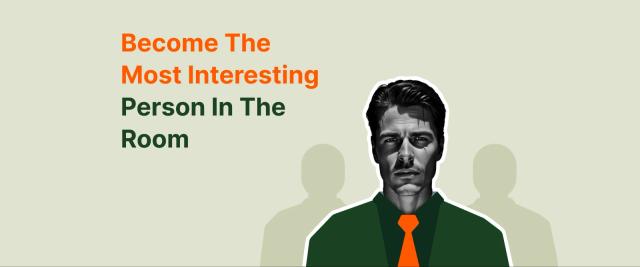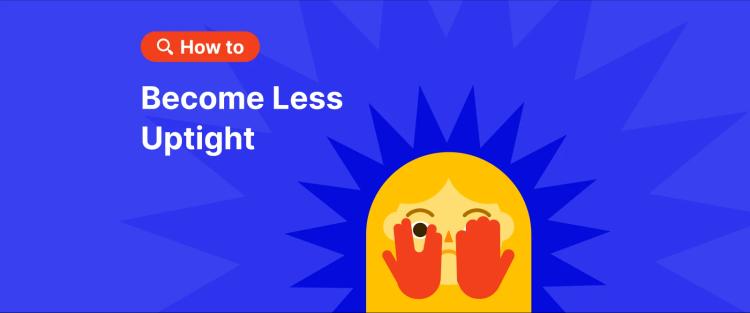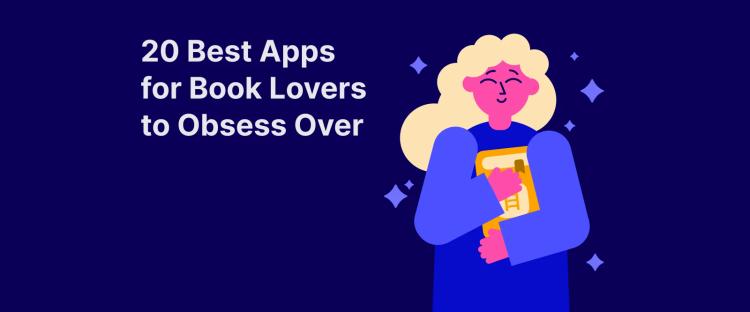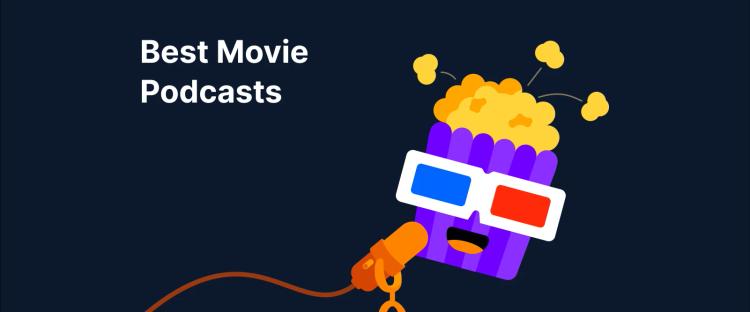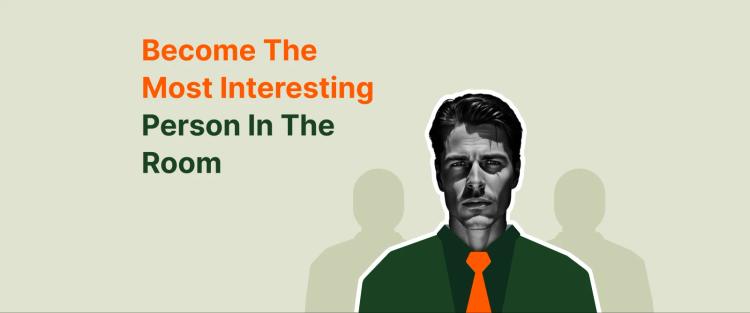You're a devoted manga reader but still struggle to comprehend your favorite illustrated story? Then, you need to learn how to read manga the right way! Master its right-to-left format and examine the main art styles and symbols of Japanese comic books with a beginner-friendly guide.
Get more insights on Japanese art of living and culture from the books like 'The Life-Changing Magic of Tidying Up' by Marie Kondō and 'Ikigai' by Francesc Miralles and Hector Garcia.
Get the Headway app and find their full summary versions to start your reading journey today!
What you'll learn in this manga guide:
How to read manga right-to-left: follow traditional Japanese format
Manga symbols and layouts: understand visual language
Story structure: read panels and speech bubbles correctly
9 major manga styles: from shōjo to horror
Manga vs. anime: how they compare
Best manga apps: tools for beginners
How to get started with manga: A 3-step guide for beginners
The influence of Western and American pop culture on Japanese traditions has resulted in the production of books and comics that are read from left to right. Nevertheless, manga publications continue to uphold the traditional reading format as a testament to their Japanese origins.

Regular readers can easily adapt to manga's unconventional format by mastering the key tools of "manpu", "fukidashi", and "gitaigo", working together to build a storyline.
"Manpu" refers to manga symbols that express movement, emotions, or feelings such as sadness or embarrassment. Since they have repetitive shapes, regular readers recognize them in no time.
"Fukidashi" are the speech bubbles that give manga characters their voices and reflect the mood of the message.
Finally, "gitaigo", "giongo", and "giseigo" illustrate sound effects and feelings that sometimes make readers dizzy.
📘Read more books in less time with Headway book summaries!
1. Reading the right way: How to approach the right-to-left order
Following the Japanese alphabet flow, manga comics read from right to left and top to bottom, with the starting point placed in the upper-right corner. The narrative is contained within frames called "koma". So, to read a page of manga, you start with the "koma" in the top right-hand corner, and you end with the "koma" in the bottom left-hand corner. If this layout is new, take a few minutes daily to learn Japanese so the order and common cues feel natural.
Such a format may create an illusion that a book must be read backwards. To correct readers in case they make such a mistake, comics like 'Spy x Family' and 'The King's Beast' add a "last page" disclaimer, specifying that "You're reading the wrong way!"
2. Manga page layout: How to read panels, thoughts, and speech bubbles
Most manga and manhwa comics contain a tutorial on how to read them.
A "panel" is an individual frame or single drawing in the multiple-panel sequence of a comic strip or a sequence of cartoons. It is arranged in interrelated panels to display brief humor or form a narrative, often serialized, with text in balloons and captions. The panels are separated by a gutter (a small space).
"Panel flow" is how a writer and designer arrange panels on a page to guide the reader in a specific direction. Visual cues act as a map to direct the reader's eyes across the page until they finish reading.
Typically, strips consist of four panels or "yonkoma", like in 'For Better or For Worse'. Yonkoma has a "ki-shō-ten-ketsu" structure based on Japanese "kanji" (descriptive) characters:
1st panel: Ki (起) sets the scene and flow of the story.
2nd panel: Shō (承): develops the story's foundation.
3rd panel: Ten (転) reaches the climax and experiences unforeseen events.
4th panel: Ketsu (結) concludes the story, reflecting on the third-panel aftereffects.
Still, mangakas often opt for varying sizes and numbers of panels in their daily strips, sometimes using three panels like in 'Garfield' or even a single panel like in 'Non-Sequitur.'
Communication within comic strips commonly occurs through speech bubbles.
When reading a comic, it's important to start with the highest speech bubble and then proceed to read the dialog as it unfolds from top to bottom within each bubble.
📘Get the Headway app and level up your reading skills!
3. How to understand manga's visual language: Speed lines and 'sound effects'
In Japanese manga, 'sound effects' are represented through "onomatopoeia," which means creating words that mimic the sounds they describe. In English, a word like "boom" is considered onomatopoeic. Simply reading these words can evoke the associated sounds, such as the crashing of waves.
Japanese is known for having a wide array of onomatopoeic words, as it is a common part of daily communication. The words "crying" or "laughing" are applicable to everyday scenarios as they convey uncontrolled, frank emotions.
Also, manga often uses dynamic or speed lines to convey movement, such as when a character is running. These lines are tapered (ending in a point) and positioned in the background in a horizontal parallel arrangement. The closer the lines are together, the faster the movement appears to be.
📘Explore the Headway app for quick lessons from nonfiction bestsellers!
Japanese comics' basic storytelling methods and techniques
The two most common methods of storytelling are dialog and narrative.

Dialog in comics advances the plot by conveying vital information about the story's milestones, key characters, dynamics, and settings. It contributes to suspense and complements the action. In turn, narrative speech plays a crucial role in helping readers gain a finer interpretation of manga characters and their storylines.
The list of basic techniques in Japanese comic storytelling includes a graphic novel, a manga, and a doodle. In the case of the graphic novel technique, readers may see a variety of panel layouts and compositions, as well as grid structures, including full-page spreads.
This method adds drama to the storyline and preserves a balance of text and visuals. It helps the readers moderate their reading flow, including pace and awareness of the story's progress.
In turn, manga draws from visual elements and a broad style developed from serialized cartoon strips originally published in Japanese newspapers. This technique allows for an array of genres, including adventure, romance, sci-fi, and political commentary, offering diverse and engaging content for readers.
In the manga, the placement and order create a sense of motion and rhythm. It tends to stretch the narrative across multiple volumes, adding an immersive tone and complexity to the storyline styles.
📘Stop scrolling, start growing with the Headway app!
The power of emotional reading: 9 genres of manga
The variety of art styles in manga means to magnify the reader's emotions. Each style has an original appeal that boosts readers' interest in the story. The style also triggers reactions using visual cues like teardrop-shaped eyes, adding to the readers' observant skills.

The basic manga art styles are as follows:
"Chibi," or "cute and small": appeals to younger readers or elders young at heart with its exaggerated features. One of the best examples is 'Sailor Moon', a Japanese manga series from the 1990s by Naoko Takeuchi. It is frequently associated with "kawaii" and "kodomo" styles.
"Kodomo": oriented on children and families. It features adult heroes while maintaining child-friendly storylines akin to 'Pokémon Adventures' by Hidenori Kusaka.
"Kawaii": characters have large, expressive eyes and endearing features. Backgrounds and settings are less detailed. An adult-only storyline like 'Chi's Sweet Home' tends to add a layer of complexity.
"Moe": a style frequently used in kawaii manga and anime. "Moe" implies the use of art and characterization to elicit an emotional response, often evoking feelings of affection or deep empathy, similar to 'Alice in the Country of Hearts'.
"Realistic" or "hyper-realistic": captivating due to its intense focus on details, darker color scheme, and cynic story tone. 'JoJo's Bizarre Adventures' pictures some psycho-spiritual manifestations. 'Fist of The North Star' was extremely popular throughout the 1980s as an homage to Bruce Lee.
"Big Eyes" or "The Tezuka effect": introduced the concept of exaggeratedly large eyes, an innocent aesthetic that sharply contrasts with more aggressive character design. Remains one of the most influential manga styles, with Osamu Tezuka's 'Mighty Atom' and 'Astro Boy' listed among the greatest examples.
"The horror" and "the paranormal" are standout genres for portraying disorientation and anxiety that push people to commit unimaginable evil. Junji Ito's 'Uzumaki' is an iconic series that explores the theme of urban community paranoia.
"Shōjo": features a "sad longing" aesthetic characterized by heart-shaped faces, big sparkly eyes, and pointy chins. It rose to popularity in 1970 thanks to the mangaka (comic artist) legend Moto Hagio. Headway particularly recommends his gothic vampire manga, 'The Poe Clan', and 'The Heart of Thomas'.
"Dragon ball shaped heads": unique for the head shapes, stretched facial features, and overly muscular bodies. This style, created by Akira Toriyama, is familiar to seasoned manga and anime fandom. Check out 'Dr. Slump' and 'Jaco the Galactic Patrolman' (set before Toriyama's 'Dragon Ball' story).
📘Find more insights in Headway book summaries!
Manga and anime: How animation fuels comics comprehension
To put it simply, manga refers to comics and graphic novels made in Japan, whereas anime refers to Japanese animation.
One of the most popular editorial categories of manga that make it into anime is Shōnen manga, meaning "boys' comics."
Shōnen usually features adolescent male protagonists who embark on action-packed adventures in fantastical or sci-fi settings, navigating friendship and coming-of-age challenges. The list of the most iconic Shōnen series includes 'My Hero Academia', 'Naruto', 'Attack on Titan', 'One Piece', and 'Dragon Ball'.
In the 1980s, 'Mobile Suit Gundam' (known as 'Kidō Senshi Gandamu' in Japanese) revolutionized the world of anime by introducing a trend-setting manga-based series that sparked widespread popularity.
This story is credited with giving life to the realistic robot sub genre or "mecha" anime, a unique approach that aimed for design realism by incorporating elements such as weaponry, the potential for energy depletion, ammunition shortages, and malfunctions.
📘Download the Headway app and become more productive, starting now!
Manga apps and tools to enhance your reading experience
There are legal services offering manga readings that might be of interest to readers of all levels.
The "J-Novel Club" streaming service offers finalized e-books that English speakers might find beginner-friendly. The service imitates the "installments" publishing style traditionally used in Japan.
A few years ago, at AnimeNYC 2019, the service introduced the "J-Novel Heart" imprint to produce and popularize light-hearted romances like 'My Next Life as a Villainess: All Routes Lead to Doom!' and 'Bibliophile Princess.' Manga fans also enjoy weekly sneak peeks of pre-release comics.
As you progress with manga reading and deciphering skills, check out the Comico App. Comico is a money-friendly app offering light, original novels for free. However, this time be ready to use knowledge of key Japanese phonetic symbols and ideograms.
INKR Comics, a top-rated manga subscription app, offers personalized recommendations of comics, manga, and webtoons. The genres are endlessly diverse to cater to all levels and tastes of Japanese culture admirers: comedy, horror, "isekai" (a fantasy sub-genre featuring stories in which ordinary people are transported to a magical world), slice-of-life, sci-fi, drama, action, and others.
Japanese manga is also extremely popular in South Korea. One of the top choices at the moment (August 2024) is a typical K-drama story with fantasy webtoon features, 'Can't Pretend to Be Blind Anymore.'
📘Try Headway and turn reading into a self-growth habit!
Improve your manga reading skills with Headway book summaries
To take another step when learning the art and culture of The Land of the Rising Sun, the Headway Team suggests the '2 Best Japanese Culture Books' and '2 Best Books on Japanese History' reading lists.
The most enlightening way to gain a deeper understanding of manga symbolism is to read Matt Alt's 'Pure Invention: How Japan’s Pop Culture Conquered the World'. This author presents Japan from a fresh perspective on its cultural landscape highlighting its impressive technological advancements.
Download the Headway app for easy-to-read guides and book summaries that will help you diversify your perspective on the cultural symbols and traditions of unique world cultures.
Frequently Asked Questions
What is manga?
Manga is an exclusive linguistic term for comic books or graphic novels produced in Japan or a Japanese style. It is an art form embodying Haruki Murakami's genre of magical realism, attracting readers from all walks of life with stories of romance, fantasy, sci-fi, action, drama, history, horror, sports, and adventure.
What makes Japanese manga popular?
As an integral part of Japanese pop culture, manga's popularity extends far beyond Japan and its cultural capital - Tokyo. It’s a unique product that helped the country get up on its feet after a massive reputational downfall that Japan has experienced after the World War II when it was a part of the Axis Powers.
COVID-19 pandemic is also linked to the recent surge in manga’s popularity. People stayed at home streaming Amazon Prime, using Kindle, or reading comic books for hours. Manga became another tool to assuage anxiety because of what was going on. As a form of entertainment, manga comics invite readers to escape, relate, and have fun.
When was the first manga created?
The world of manga intricately intertwined historical and contemporary cultural elements to provide a rich context for Japan's modern popular culture. Having started as scrolls that later evolved into comic magazines and books, its origins can be traced back to the 19th century with the groundbreaking 'Hokusai Manga', the first manga by Katsushika Hokusai in 1814.
As time passed, the concept of manga kept diversifying, transforming into its modern-day comic book format, gaining initial worldwide acclaim in the 1920s and 1930s pre-war era.
How to read manga first time?
For a non-Japanese reader, a manga like 'Yotsuba' by Kiyohiko Azuma might look easy, but it's better that you don't take it at face value. There are some distorted formulations that you might not find in the dictionary. Start with more accessible reads like 'Cute Girls Doing Cute Things' or "shōjo" and "josei" romances. 'Boku Dake ga Inai Machi' or 'Erased' is also a good choice for a novel manga reader.
Is there any benefit to reading manga?
When you read your favorite manga, you are engaging in decoding symbols, understanding the interplay between text and images, interpreting cultural references, and recognizing unique storytelling techniques. As a result, you develop critical thinking skills and deal with written as well as illustrated ideas that boost your imagination.



